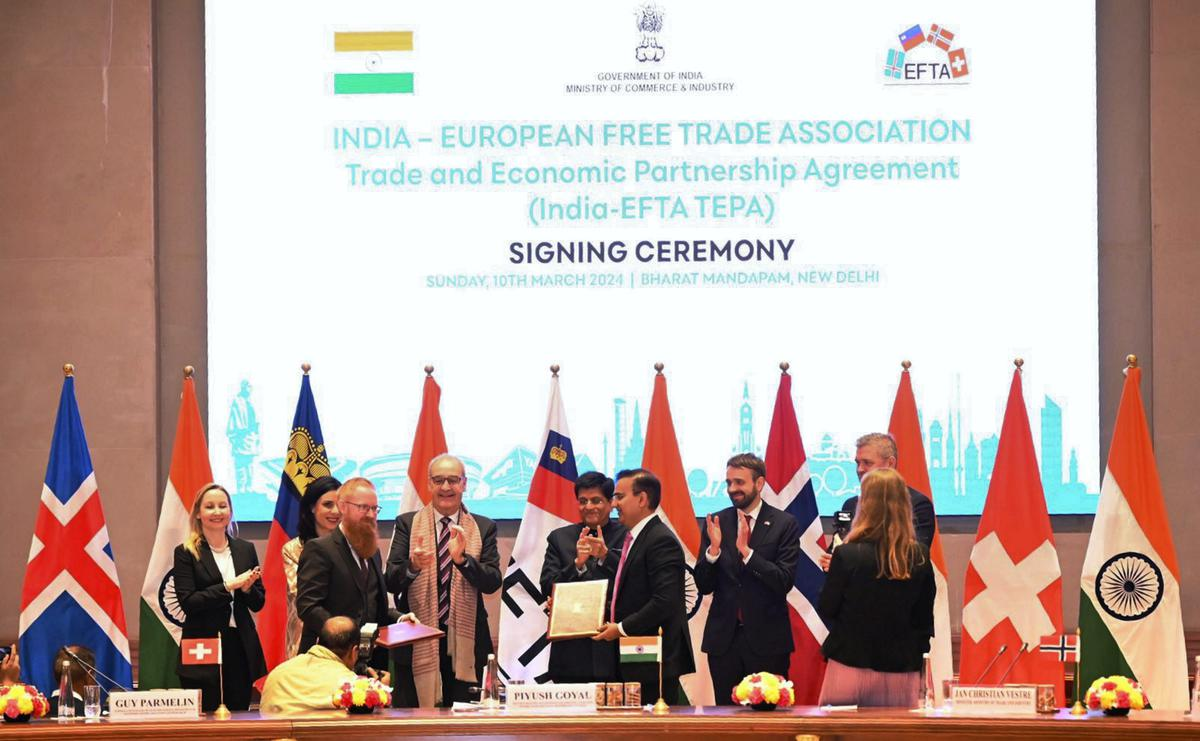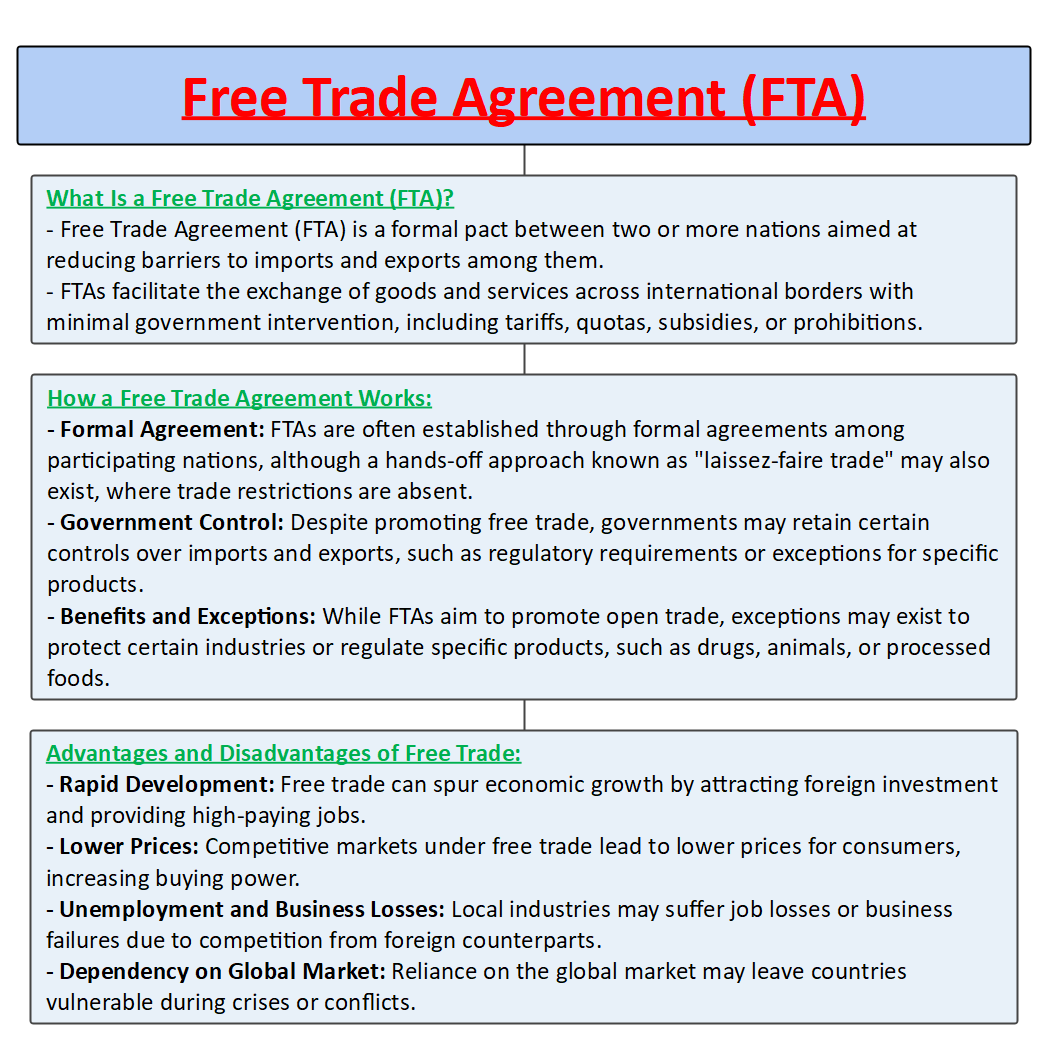Description

Copyright infringement not intended
Picture Courtesy: https://www.thehindu.com/news/national/what-do-ftas-with-european-countries-signal-explained/article67964270.ece/amp/
Context: The India-EFTA Trade and Economic Partnership Agreement (TEPA) aims to boost trade and investment between India and EFTA members Switzerland, Norway, Iceland, and Liechtenstein.
Key Components of India-EFTA Trade and Economic Partnership Agreement (TEPA)
- Investment: TEPA aspires to attract $100 billion in investments from EFTA countries (Switzerland, Norway, Iceland, and Liechtenstein) to India over 15 years, potentially creating millions of employment. However, meeting this aim is dependent on India's economic development rate and the returns on EFTA investments.
- Trade in Goods: India will reduce tariffs on the majority of EFTA products within an agreed-upon timeframe. This favours EFTA exports of seafood, fruits, machinery, medical equipment, and other products. Importantly, gold, a key EFTA import, is excluded. India's exports are unlikely to increase significantly, as EFTA nations currently have low or free tariffs on Indian goods.
- Trade-in Services: Both sides agree to liberalise certain industries. Yoga instructors and traditional medicine practitioners from India will have greater access to Norway and easier movement of skilled professionals to EFTA countries. Regulatory regulations in each country can continue to have an impact on service delivery.
- Sustainable Development: TEPA, a first for India, includes a chapter on sustainable development, which addresses environmental and labour issues. This may result in scrutiny of India's compliance with certain requirements.
- Intellectual Property Rights: The agreement recognises EFTA's need for enhanced IPR protection beyond WTO guidelines. This has the potential to influence India's internal patent regulatory systems.

Challenges
- Regulatory challenges: Regulatory obstacles in each country might prevent the smooth implementation of the agreement, hurting trade and investment flows.
- Economic uncertainty: The achievement of investment and job creation targets is dependent on India's economic development rate and the return on EFTA investments, which presents challenges in an unpredictable economic environment.
- Service Delivery: Each country's regulatory framework may have an impact on service delivery, perhaps affecting ease of offering.
- Balancing Sustainable Development: Implementing environmental and labour standards while striking a balance with trade liberalisation may be difficult.
- Intellectual Property Rights Compliance: Domestic laws amended to comply with IPR provisions may be scrutinised and require additional revisions.
Way Forward
- Continuous discussion and cooperation between India and the EFTA countries are required for TEPA's effective implementation.
- Regular monitoring and evaluation of progress towards investment targets and other important objectives will assist in addressing problems and ensuring the agreement's success.

Conclusion
- The India-EFTA Trade and Economic Partnership Agreement (TEPA) is a key step towards deeper economic integration between India and the EFTA countries. While it provides potential for trade and investment, issues like regulatory barriers and economic uncertainty must be addressed. With careful planning and coordination, TEPA can promote long-term progress and success for all parties involved.
Must Read Articles:
INDIA’S TRADE AGREEMENT WITH EFTA: https://www.iasgyan.in/daily-current-affairs/indias-trade-agreement-with-efta#:~:text=Context%3A%20The%20Trade%20and%20Economic,cooperation%20between%20the%20two%20countries.
|
PRACTICE QUESTION
Q. While Free Trade Agreements (FTAs) can open up new opportunities, they can also result in employment losses in particular industries due to increasing competition. How to reduce employment losses in sensitive industries while increasing employment in a free trade environment?
|







